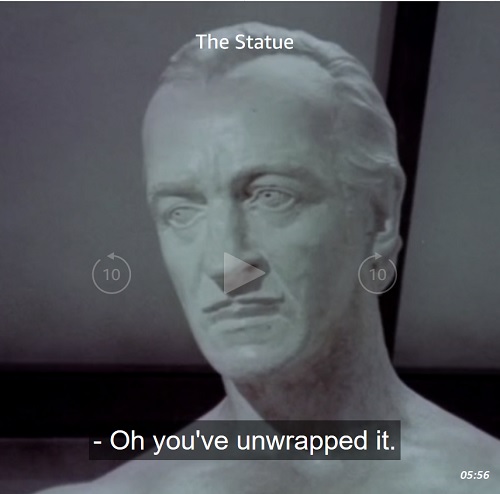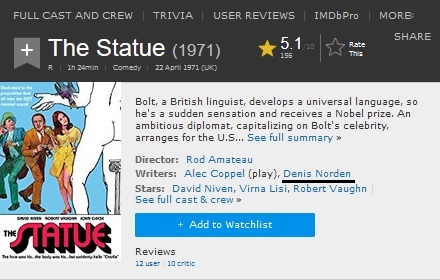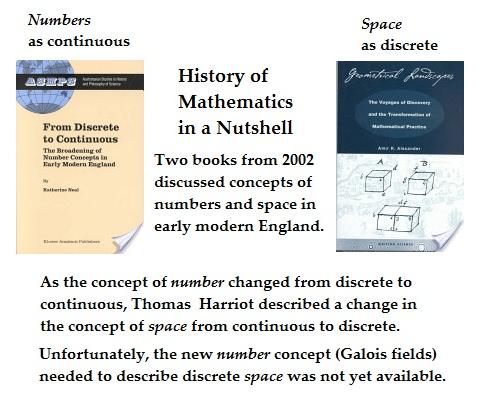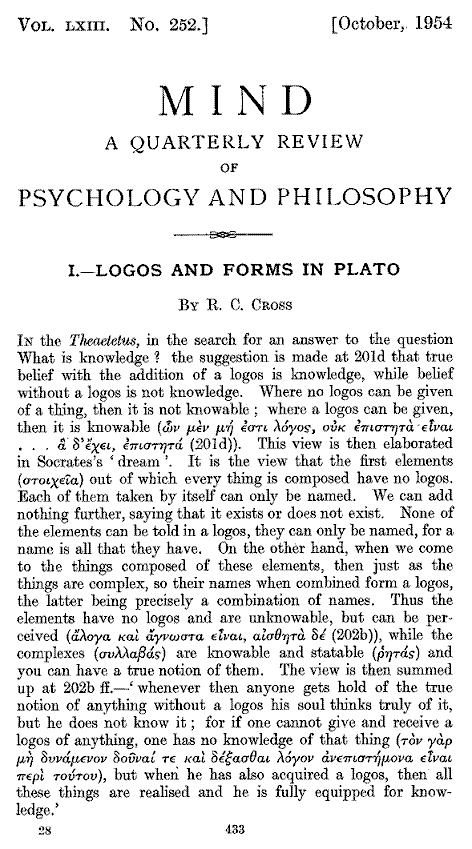For the former, see Warburg in this journal.
For the latter, see beadgame.space on the Web.
Wednesday, April 6, 2022
Programmes: Warburgian vs. Hessian
Friday, September 14, 2018
Warburg at Cornell, Continued
Monday, November 11, 2024
Echo Chamber: “The Room Outside of Time”*
"… as Gombrich well knew, Warburg also
constantly regrets the 'loss' of this 'thought-space' …"
Echo from the Pasaje Bella Vista in Cuernavaca —
“We keep coming back and coming back
To the real: to the hotel instead of the hymns….”
— Wallace Stevens

— Postcard from eBay
|
From Under the Volcano, by Malcolm Lowry, 1947, Chapter I:
Faustus is gone: regard his hellish fall —
Shaken, M. Laruelle replaced the book on the table… he reached to the floor for a folded sheet of paper that had fluttered out of it. He picked the paper up between two fingers and unfolded it, turning it over. Hotel Bella Vista, he read. There were really two sheets of uncommonly thin hotel notepaper…. I sit now in a little room off the bar at four-thirty in the morning drinking ochas and then mescal and writing this on some Bella Vista notepaper I filched the other night…. But this is worst of all, to feel your soul dying. I wonder if it is because to-night my soul has really died that I feel at the moment something like peace. Or is it because right through hell there is a path, as Blake well knew, and though I may not take it, sometimes lately in dreams I have been able to see it? …And this is how I sometimes think of myself, as a great explorer who has discovered some extraordinary land from which he can never return to give his knowledge to the world: but the name of this land is hell. It is not Mexico of course but in the heart. |
* "The room outside of time" is a recurring theme in "The Resort."
Monday, August 7, 2023
Consensual Twilight
The previous post (on "Come Swim") suggests a Sunset Boulevard review —
From a search in this journal for "consensual" —

"Yet if this Denkraum , this 'twilight region,' is where the artist and
emblem-maker invent, then, as Gombrich well knew, Warburg also
constantly regrets the 'loss' of this 'thought-space,' which he also
dubs the Zwischenraum and Wunschraum ."
— Memory, Metaphor, and Aby Warburg's Atlas of Images ,
Christopher D. Johnson, Cornell University Press, 2012, p. 56
Sunday, August 6, 2023
Contra Gombrich
A search in this journal for Cornell + Warburg suggests
a review of the concept "iconology of the interval " . . .
Ikonologie des Zwischenraums —
"Yet if this Denkraum , this 'twilight region,' is where the artist and
emblem-maker invent, then, as Gombrich well knew, Warburg also
constantly regrets the 'loss' of this 'thought-space,' which he also
dubs the Zwischenraum and Wunschraum ."
— Memory, Metaphor, and Aby Warburg's Atlas of Images ,
Christopher D. Johnson, Cornell University Press, 2012, p. 56
Tuesday, April 5, 2022
“Analysis.” — Dr. Robert Ford in “Westworld”
"Godard, in the final analysis, expands the Warburgian programme
of iconology into that of a cinematographic iconology of the interstice."
— The author of the essay quoted in the previous post.
For a Maker of Strings Who Died on March 30
Related material: Blue Guitar.
Wednesday, March 30, 2022
“Design is how it works.” — Steve Jobs
See box-space.design.
Related cinematic remarks —
|
From Third Text , 2013, Vol. 27, No. 6, pp. 774–785 — "Genealogy of the Image in Histoire(s) du Cinéma : Godard, Warburg and the Iconology of the Interstice" * * * * P. 777 — Godard conceives of the image only in the plural, in the intermediate space between two images, be it a prolonged one (in Histoire(s) there are frequent instances of black screens) or a non-existent one (superimposition, co-presence of two images on screen). He comments: ‘[For me] it’s always two, begin by showing two images rather than one, that’s what I call image, the one made up of two’ [18] and elsewhere, ‘I perceived . . . cinema is that which is between things, not things [themselves] but between one and another.’ [19] 18. Jean-Luc Godard and Youssef Ishaghpour, "Archéologie du cinéma et mémoire du siècle," Farrago ,Tours, 2000, p. 27. The title of this work is reflective of the Godardian agenda that permeates Histoire(s) . 19. Jean-Luc Godard, "Introduction à une véritable histoire du cinéma," Albatros , Paris,1980, p. 145 |
See as well Warburg in this journal.
Saturday, April 3, 2021
Seduced by Language
The previous post suggests a review of a passage quoted here
on Holy Cross Day 2018 . . .
in light of a post from March 2021 —
Saturday, September 5, 2020
Ikonologie des Zwischenraums
The title is from a Cornell page in the previous post.

Related material (click to enlarge) —
The above remarks on primitive mentality suggest
a review of Snakes on a Plane.
For Witch Wannabes
Part I — From a TV series released in the UK on Sept. 14, 2018 —
Pages scattered by the wind magically reassemble
at an Oxford witch’s command:
Part II — Images on a book cover from a Log24 search for “Dominus” —
Part III — From Log24 on the “Witches” release date —
In this Cornell page, Gombrich discusses images symbolizing sin.
What sort of sin is symbolized by the above time-reversal scene
in “Discovery of Witches” and by such scenes in the new film “Tenet,”
the reader may decide.
Sunday, November 11, 2018
Zwischenraum
See also Warburg + Cornell in this journal.
"Yet if this Denkraum , this 'twilight region,' is where the artist and
emblem-maker invent, then, as Gombrich well knew, Warburg also
constantly regrets the 'loss' of this 'thought-space,' which he also
dubs the Zwischenraum and Wunschraum ."
— Memory, Metaphor, and Aby Warburg's Atlas of Images ,
Christopher D. Johnson, Cornell University Press, 2012, p. 56
Saturday, September 29, 2018
“Ikonologie des Zwischenraums”
The title is from Warburg. The Zwischenraum lines and shaded "cuts"
below are to be added together in characteristic two, i.e., via the
set-theoretic symmetric difference operator.
Wednesday, September 19, 2018
In Memoriam:
Denis Mostyn Norden, writer, broadcaster and television presenter,
born 6 February 1922; died 19 September 2018.

For Abraham Warburg —
"Que cantaba el Rey David."
Friday, September 14, 2018
Denkraum
Underlying the I Ching structure is the finite affine space
of six dimensions over the Galois field with two elements.
In this field, "1 + 1 = 0," as noted here Wednesday.
See also other posts now tagged Interstice.
Thursday, September 13, 2018
Godard and Interality
The previous post, "One Plus One," suggests some further
art-historical remarks on interality —
|
From Third Text , 2013, Vol. 27, No. 6, pp. 774–785 — "Genealogy of the Image in Histoire(s) du Cinéma : Godard, Warburg and the Iconology of the Interstice" * * * * P. 775 — My discussion will focus on the significance of the concept of the ‘space in-between,’ its importance for Godard’s work and its role in a relational historiography of images more broadly. I hope to corroborate how Godard functions as a twenty-first century archaeologist of the moving image, constructing a meta-cinematic collage that, while consisting of an indexing of (almost exclusively) pre-existing filmic samples, ends up becoming a hybrid work of art in its own right. Godard, in the final analysis, expands the Warburgian programme of iconology into that of a cinematographic iconology of the interstice. * * * * P. 777 — Godard conceives of the image only in the plural, in the intermediate space between two images, be it a prolonged one (in Histoire(s) there are frequent instances of black screens) or a non-existent one (superimposition, co-presence of two images on screen). He comments: ‘[For me] it’s always two, begin by showing two images rather than one, that’s what I call image, the one made up of two’ [18] and elsewhere, ‘I perceived . . . cinema is that which is between things, not things [themselves] but between one and another.’ [19] 18. Jean-Luc Godard and Youssef Ishaghpour, "Archéologie du cinéma et mémoire du siècle," Farrago ,Tours, 2000, p. 27. The title of this work is reflective of the Godardian agenda that permeates Histoire(s) . 19. Jean-Luc Godard, "Introduction à une véritable histoire du cinéma," Albatros , Paris,1980, p. 145 * * * * P. 783 — If it is in ‘the in-between’ that thought is born, then for Godard cinematography as ‘a form that thinks . . . was born with the advent of modern painting.’ [62] 62. Godard and Ishaghpour, op. cit., pp 45–46. * * * * P. 785 — Warburg commented on the signification of the black spaces that he placed between images in his analysis of the network of intervals in Mnemosyne , by quoting Johann Wolfgang Goethe’s dictum ‘the truth inhabits the middle space.’ [68] This citation induces a feeling of déjà-vu for the viewer of Histoire(s). The link was not missed by Warburg himself, as one of his diary entries testifies: ‘We can compare this phenomenon [the iconology of the interval] to that of the cinematic montage, the domain of the interpretation is an intervallic one.’ [69] 68. Warburg, Mnemosyne , pp 135–146. 69. Warburg is quoted in Didi-Huberman, L’image survivante, p. 503. (Georges Didi-Huberman, L’image survivante. Histoire de l’art et temps des fantômes selon Aby Warburg , Minuit, Paris, 2002) |
Sunday, May 27, 2012
Finite Jest
The books pictured above are From Discrete to Continuous ,
by Katherine Neal, and Geometrical Landscapes , by Amir Alexander.
Commentary—
“Harriot has given no indication of how to resolve
such problems, but he has pasted in in English,
at the bottom of his page, these three enigmatic
lines:
‘Much ado about nothing.
Great warres and no blowes.
Who is the foole now?’
Harriot’s sardonic vein of humour, and the subtlety of
his logical reasoning still have to receive their full due.”
— “Minimum and Maximum, Finite and Infinite:
Bruno and the Northumberland Circle,” by Hilary Gatti,
Journal of the Warburg and Courtauld Institutes ,
Vol. 48 (1985), pp. 144-163
Saturday, June 26, 2010
Plato’s Logos
"The present study is closely connected with a lecture* given by Prof. Ernst Cassirer at the Warburg Library whose subject was 'The Idea of the Beautiful in Plato's Dialogues'…. My investigation traces the historical destiny of the same concept…."
* See Cassirer's Eidos und Eidolon : Das Problem des Schönen und der Kunst in Platons Dialogen, in Vorträge der Bibliothek Warburg II, 1922/23 (pp. 1–27). Berlin and Leipzig, B.G. Teubner, 1924.
— Erwin Panofsky, Idea: A Concept in Art Theory, foreword to the first German edition, Hamburg, March 1924
On a figure from Plato's Meno—

The above figures illustrate Husserl's phrase "eidetic variation"—
a phrase based on Plato's use of eidos, a word
closely related to the word "idea" in Panofsky's title.
For remarks by Cassirer on the theory of groups, a part of
mathematics underlying the above diamond variations, see
his "The Concept of Group and the Theory of Perception."
Sketch of some further remarks—

The Waterfield question in the sketch above
is from his edition of Plato's Theaetetus
(Penguin Classics, 1987).
The "design theory" referred to in the sketch
is that of graphic design, which includes the design
of commercial logos. The Greek word logos
has more to do with mathematics and theology.
"If there is one thread of warning that runs
through this dialogue, from beginning to end,
it is that verbal formulations as such are
shot through with ambiguity."
— Rosemary Desjardins, The Rational Enterprise:
Logos in Plato's Theaetetus, SUNY Press, 1990
Related material—
Sunday, December 16, 2007
Sunday December 16, 2007
Meets Mad Ezra
"Plato's Good was a fixed and eternal and unmoving Idea, whereas for the rhetoricians it was not an Idea at all. The Good was not a form of reality. It was reality itself, ever changing, ultimately unknowable in any kind of fixed, rigid way." –Phaedrus in Zen and the Art of Motorcycle Maintenance
This apparent conflict between eternity and time, fixity and motion, permanence and change, is resolved by the philosophy of the I Ching and by the Imagism of Ezra Pound. Consider, for example, the image of The Well

as discussed here on All Saints' Day 2003 and in the previous entry.
As background, consider the following remarks of James Hillman in "Egalitarian Typologies Versus the Perception of the Unique," Part III: Persons as Images—
|
"To conceive images as static is to forget that they are numens that move. Charles Olson, a later poet in this tradition, said: 'One perception must immediately and directly lead to a further perception… always, always one perception must must must move instanter, on another.' 80 Remember Lavater and his insistence on instantaneity for reading the facial image. This is a kind of movement that is not narrational, and the Imagists had no place for narrative. 'Indeed the great poems to come after the Imagist period– Eliot’s The Waste Land and Four Quartets; Pound’s Cantos; Williams’s Paterson– contain no defining narrative.' 81 The kind of movement Olson urges is an inward deepening of the image, an in-sighting of the superimposed levels of significance within it. 82 This is the very mode that Jung suggested for grasping dreams– not as a sequence in time, but as revolving around a nodal complex. If dreams, then why not the dreamers. We too are not only a sequence in time, a process of individuation. We are also each an image of individuality."
80 The New American Poetry (D. M. Allen, ed.) N.Y.: Evergreen, Grove, 1960, pp. 387-88. from Jones, p. 42. 81 Jones,* p. 40. 82 H. D. later turned narration itself into image by writing a novel in which the stories were "compounded like faces seen one on top of another," or as she says "superimposed on one another like a stack of photographic negatives" (Jones, p. 42). Cf. Berry,** p. 63: "An image is simultaneous. No part precedes or causes another part, although all parts are involved with each other… We might imagine the dream as a series of superimpositions, each event adding texture and thickening to the rest." * Imagist Poetry (Peter Jones, ed.) London: Penguin, 1972 ** The contrast between image simultaneity and narrative succession, and the different psychological effects of the two modes, is developed by Patricia Berry, "An Approach to the Dream," Spring 1974 (N. Y./Zürich: Spring Publ.), pp. 63, 68-71 |
Hillman also says that
|
"Jung’s 'complex' and Pound's definition of Image and Lavater's 'whole heap of images, thoughts, sensations, all at once' are all remarkably similar. Pound calls an Image, 'that which presents an intellectual and emotional complex in an instant of time'… 'the Image is more than an Idea. It is a vortex or cluster of fused ideas and is endowed with energy'… 'a Vortex, from which and through which, and into which, ideas are constantly rushing.' 79 Thus the movement, the dynamics, are within the complex and not only between complexes, as tensions of opposites told about in narrational sequences, stories that require arbitrary syntactical connectives which are unnecessary for reading an image where all is given at once."
79 These definitions of Image by Pound come from his various writings and can all be found in Jones, pp. 32-41. Further on complex and image, see J. B. Harmer, Victory in Limbo: Imagism 1908-17, London: Secker & Warburg, 1975, pp. 164-68. |
These remarks may help the reader to identify with Ada during her well-viewing in Cold Mountain (previous entry):
"She was dazzled by light and shade, by the confusing duplication of reflections and of frames. All coming from too many directions for the mind to take account of. The various images bounced against each other until she felt a desperate vertigo…."
If such complexity can be suggested by Hexagram 48, The Well, alone, consider the effect of the "cluster of fused ideas… endowed with energy" that is the entire 64-hexagram I Ching.
Friday, September 1, 2006
Friday September 1, 2006
“Some friends of mine
are in this band.”
— David Auburn, Proof

“And if the band you’re in
starts playing different tunes
I’ll see you on
the dark side of the moon.”
— Quoted in Log24 on the
July 20, 2005, anniversary
of the 1969 Apollo 11
“one small step” moon landing
Last night’s entry on Glenn Ford, freemasonry, and the business of narrative leads to the following meditation.
This morning’s New York Times obituary of the Apollo 11 launch director brings back memories of Dean Martin’s classic refrain “when the moon hits your eye like a big pizza pie….” This in turn is a reminder of one of the great subtitles– Dino: Living High in the Dirty Business of Dreams (by Nick Tosches, published by Secker & Warburg on November 9, 1992). I respect the launch director, Rocco A. Petrone, who later headed the successful recovery of Apollo 13 (and also headed the entire Apollo program), but I also greatly respect Nick Tosches as a guide to the dark side of humanity. Secular humanism and the religion of scientism are all very well as cheerleaders for physics, but Tosches and the Roman Catholic Church have a much better understanding of human nature and original sin.
Saturday, August 16, 2003
Saturday August 16, 2003
My Personal Thorny Crown
Kirk Varnedoe, 57, art historian and former curator of the Museum of Modern Art, died Thursday, August 14, 2003.
From his New York Times obituary:
" 'He loved life in its most tangible forms, and so for him art was as physical and pleasurable as being knocked down by a wave,' said Adam Gopnik, the writer and a former student of his who collaborated on Mr. Varnedoe's first big show at the Modern, 'High & Low.' 'Art was always material first — it was never, ever bound by a thorny crown of ideas.' "
For some background on the phrase "thorny crown of ideas," see the web page
The phrase "thorny crown of ideas" is also of interest in the light of recent controversy over Mel Gibson's new film, "The Passion."
For details of the controversy, see Christopher Orlet's Aug. 14 essay at Salon.com,
For a real "thorny crown of ideas," consider the following remarks by another art historian:
"Whether or not we can follow the theorist in his demonstrations, there is one misunderstanding we must avoid at all cost. We must not confuse the analyses of geometrical symmetries with the mathematics of combination and permutation….
The earliest (and perhaps the rarest) treatise on the theory of design drives home this insight with marvellous precision."
— E. H. Gombrich, 1979, in
The Sense of Order
This is perhaps the most stupid remark I have ever read. The "treatise on the theory of design" that Gombrich refers to is
- Dominique Douat, Methode pour faire une infinité de desseins differents avec des carreaux mipartis de deux couleurs par une ligne diagonale : ou observations du Pere Dominique Douat Religieux Carmes de la Province de Toulouse sur un memoire inséré dans l'Histoire de l'Académie Royale des Sciences de Paris l'année 1704, présenté par le Reverend Sebastien Truchet religieux du même ordre, Academicien honoraire, imprimé chez Jacques Quillau, Imprimeur Juré de l'Université, Paris 1722.
This is the title given at the web page
Truchet & Types:
Tiling Systems and Ornaments,
which gives some background.
Certain of the Truchet/Douat patterns have rather intriguing mathematical properties, sketched in my website Diamond Theory. These properties become clear if and only we we do what Gombrich moronically declares that we must not do: "confuse the analyses of geometrical symmetries with the mathematics of combination and permutation." (The verb "confuse" should, of course, be replaced by the verb "combine.")
What does all this have to do with
As jesting Pilate seems to have realized, whenever Jews (or, for that matter, Christians) tell stories, issues of truth may arise. Such issues, as shown by current events in that damned Semitic Hell-on-Earth that used to be referred to as "the Holy Land," can be of life-and-death importance.

Scene from
The Passion
The Roman soldiers may have fashioned a physical crown of thorns, but the Jews are quite capable of fashioning a very uncomfortable crown of, as Gopnik says, "ideas."
Here is an example.
"Ernst Hans Josef Gombrich, who as an author went by the name E. H. Gombrich, was born in Vienna in 1909….
The Gombrich family was Jewish, but his parents felt this had no particular relevance. In later years Mr. Gombrich said that whether someone was Jewish or not was a preoccupation for the Gestapo."
— Michael Kimmelman's obituary for Gombrich in the New York Times. Kimmelman is chief art critic for the New York Times and author of the Times's Aug. 15 Varnedoe obituary.
The web page Understanding cited above contains a link to
Pilate, Truth, and Friday the Thirteenth,
a page combining some religious remarks with a quotation of an extremely patronizing and superficial reference to my own work (and, in passing, to Truchet/Douat patterns).
This reference, and the above-quoted remark by Gombrich, constitute my own modest claim to what the Jew Gopnik jokingly calls a "thorny crown of ideas."
To me it is no joke.
This partly accounts for the rather strained quality of the attempt at humor in a web page I put together yesterday in response to Varnedoe's obituary:
Another reason for the strained quality is my being struck by the synchronicity of reading Varnedoe's obituary shortly after I had done a journal entry related to the death in July of an earlier Museum of Modern Art curator. Like Robert A. Heinlein, I think the God of the Jews is a lousy deity and an even worse father figure. I do, however, believe in synchronicity.















